Long winter ahead for migrant crisis
- Published
- comments
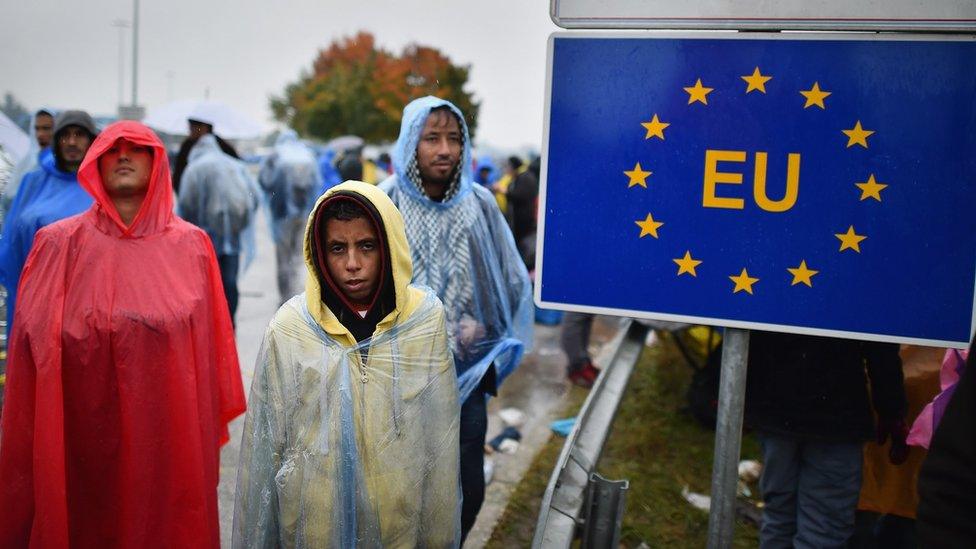
New bottle-necks form as different EU member states change their approaches
A casual observer (or frustrated European citizen) might be forgiven for thinking that EU policy on the migrant crisis boils down to: close your eyes, cross your fingers and hold your breath until winter sets in.
That is until huge waves and stormy winds force the number of boats packed with refugees and other migrants arriving in Greece to dwindle into non-existence.
Officially, of course, this is not at all the case.
Just today in Brussels, two weary looking European Commission spokespeople solemnly informed journalists:
"We are convinced, more than ever… that we need a comprehensive European solution... that can show that Europe can respond as a union to all this. Our proposals are on the table. We are very happy… Substantial progress has been achieved."
Really?
Of course there is a lot of theoretical progress.
EU leaders have agreed - at various summits - to crack down on people smugglers and to speed up the expulsion of failed asylum seekers.
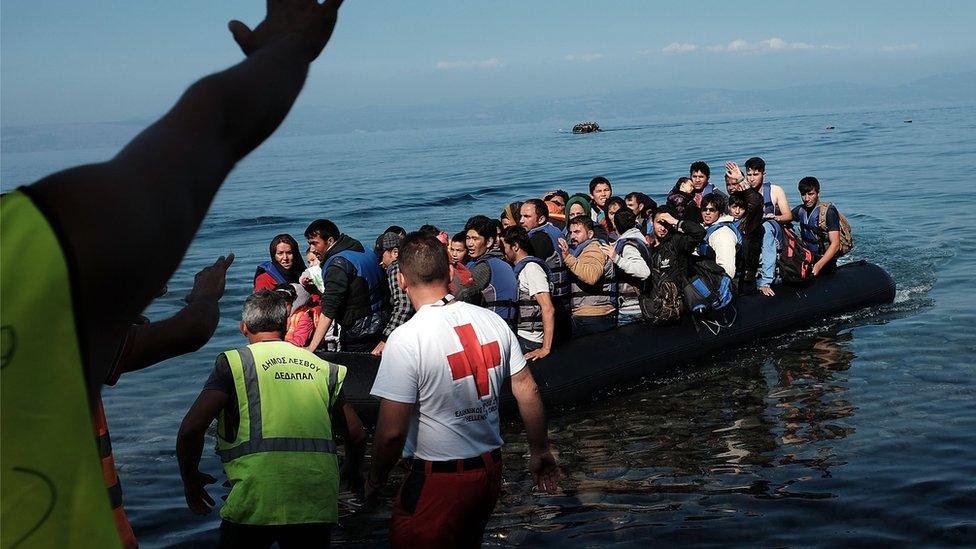
Thousands are continuing to cross from Turkey to the Greek islands daily
They have vowed to improve relations with Turkey and to help end the war in Syria to try to stop refugees coming over in the first place.
Looks good on paper.
But on the ground, in the meanwhile, the situation looks suspiciously as though it's spiralling out of control.
An average of 5,000 asylum seekers are still arriving in Greece on people smugglers' boats every day, the International Organization for Migration, external says.
Most want to head to northern Europe to claim asylum. Once the migrants and refugees have their Greek documents, they are free to get on the ferry to the mainland.
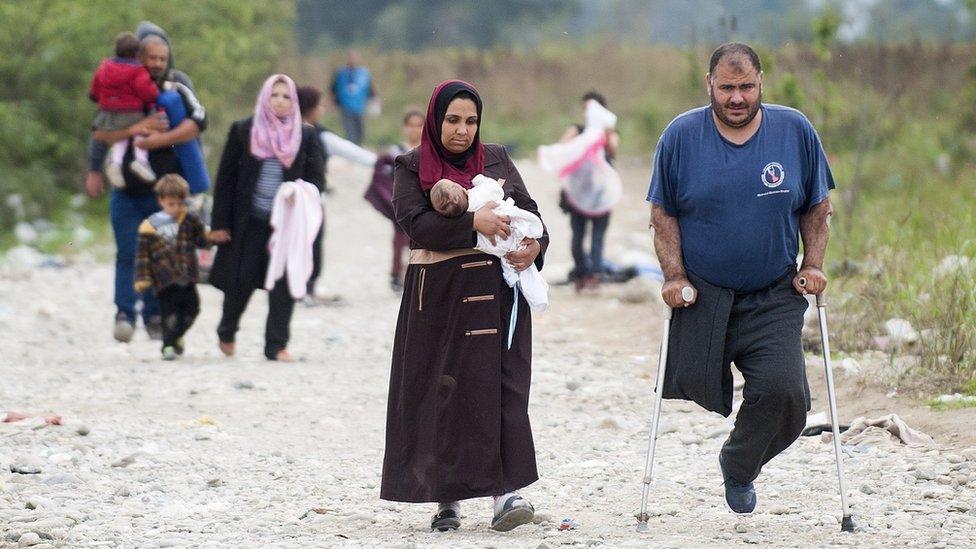
Most migrants, like these crossing into Macedonia, wish to continue north from Greece
This, together with Angela Merkel's unofficial suspension of the Dublin regulation - the EU's asylum policy which states new arrivals must claim asylum in the first EU country they arrive in - means people can continue their journey north, unhindered.
Once out of Greece, refugees and other migrants have been following a route via Hungary to reach northern Europe.
Hungary warned it would shut the door if the EU couldn't agree on how to better patrol its external borders (i.e. the shores of Greece).
The EU again failed to do so at a summit of its leaders last week, so, true to his word, the Hungarian prime minister ordered his borders closed as a thoroughfare for migrants.
The European Commission's response?
It is writing a letter to Hungary to ask the authorities to better explain the situation.
Meanwhile back in the real world, there is a bottleneck of refugees and other migrants trying to travel north through Croatia and Slovenia - which is now limiting the daily number it will allow through.
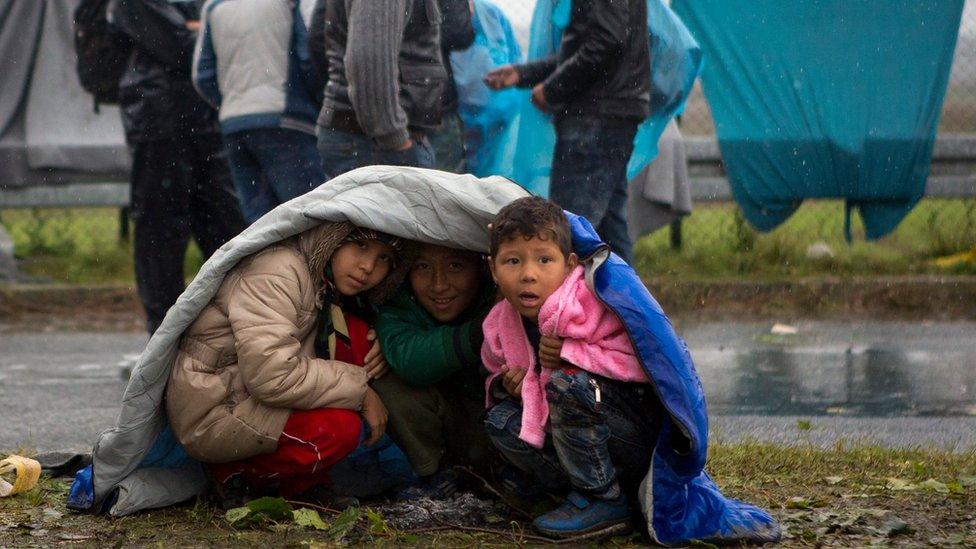
These children were waiting to cross into Slovenia on Monday
Amnesty International on Monday accused Croatia, Slovenia and other countries, external along the route of "washing their hands of any responsibility towards refugees and asylum seekers while the systems in place to offer them protection are ineffective".
It is not alone in pointing out that:
"European leaders have known full well for months that a situation like this could arise, but have still failed to prevent it by putting in place available support mechanisms."
And all the while, more and more refugees and asylum seekers are arriving in Austria, Germany and Sweden - whose anti-immigrant movements have been boosted by the pure chaos of it all.
Germany predicts it might receive more than one million asylum seekers this year and it is certainly struggling.
Local media are full of reports of rape and violence amongst the migrants; many of them stuffed into overcrowded centres, where children and women are housed alongside men.
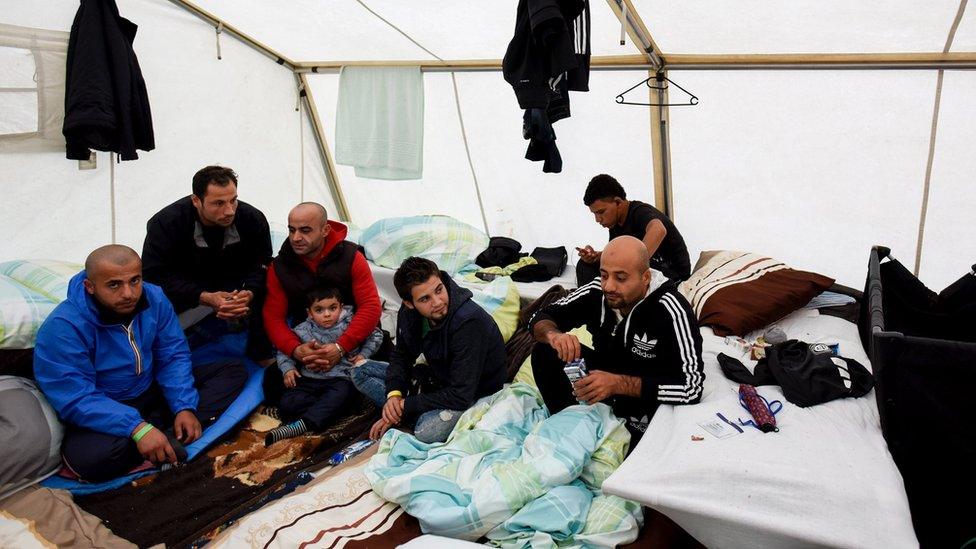
As winter approaches some asylum seekers in Germany are still being housed in tents
Austria is dealing with three times more asylum claims this year than in 2014. I asked an official from the Austrian interior ministry today whether they felt abandoned by the EU. He responded dutifully that Austria still asks - and hopes - for a "European solution".
When pressed he admitted that this kind of solution is nowhere in sight.
For the governments struggling to process and care for thousands of asylum seekers, while juggling the fears and expectations of their populations, it's going to be a long winter.
The rest of the EU leaders should be warned: it's very rare that problems disappear just because you shut your eyes.
Spring, and the new boat season will be here before you know it.
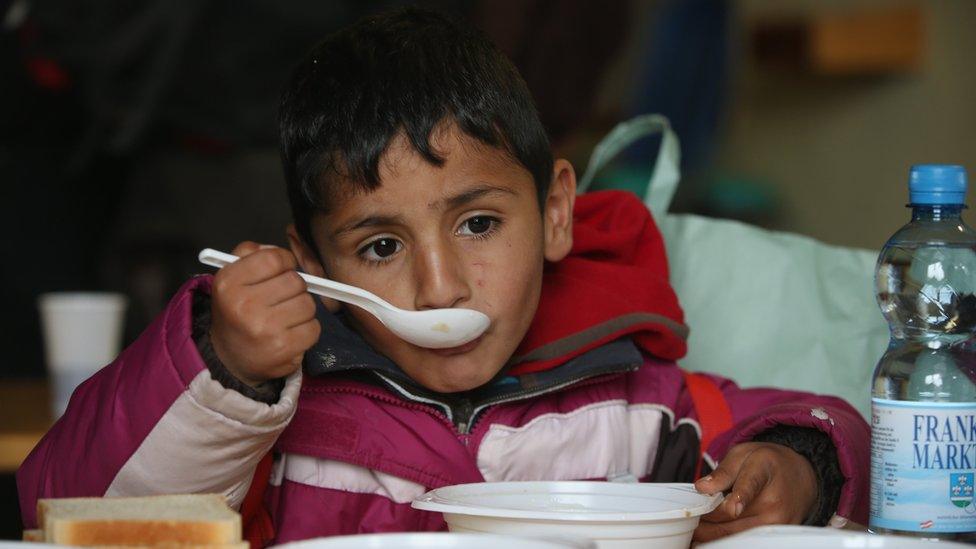
Austria is dealing with three times as many migrants as in 2014